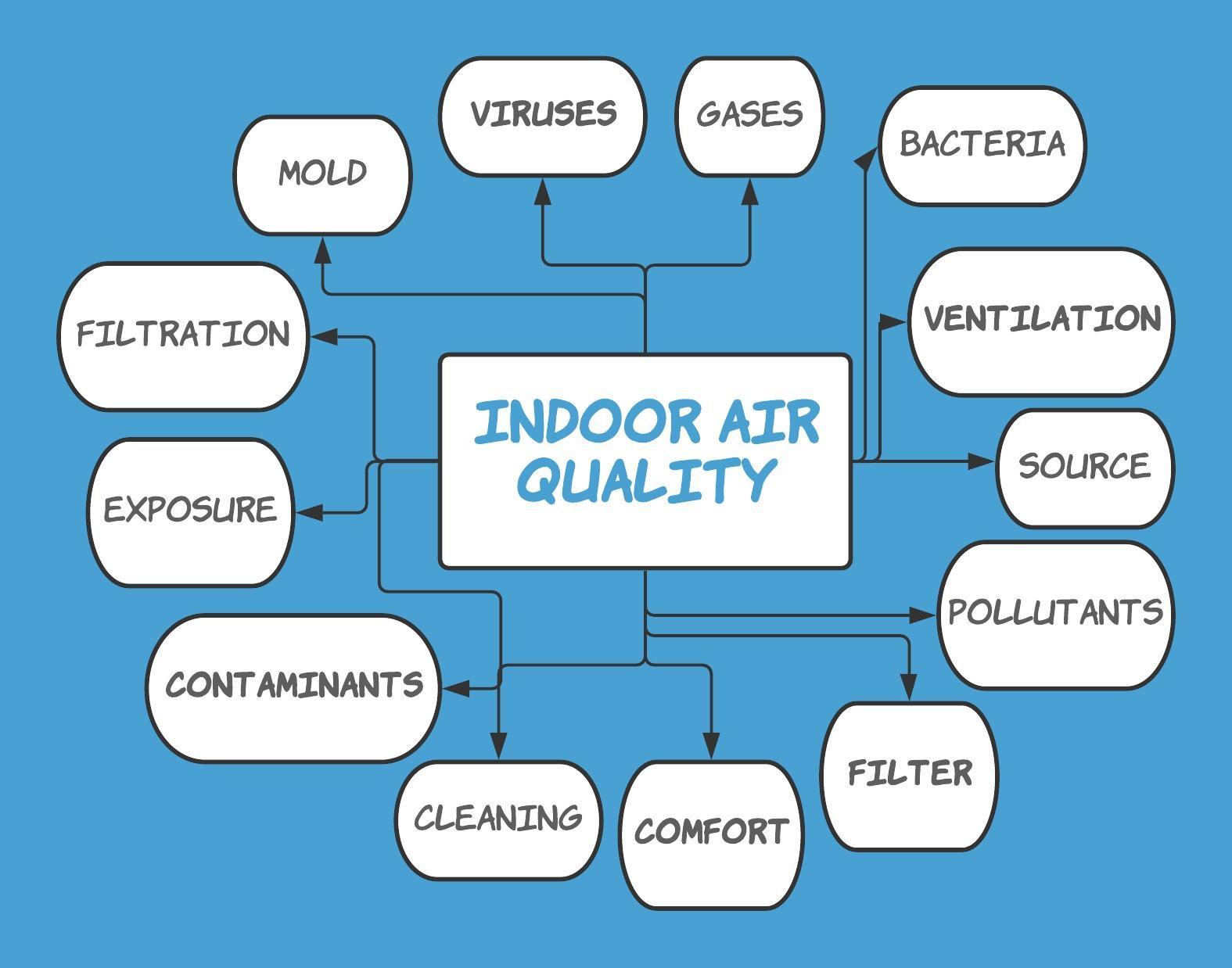Table Of Content

With a home kit, you take your own samples and then send them into the lab for direct processing. IAQ is an objective measure of the quality and purity of the air within an indoor structure such as your home or one of its rooms. The IAQ of your office may differ from that of a bathroom with no windows, for example. If you find mold, try scrubbing it with a mold-killing cleaner like bleach or borax.
Care for Your Air: A Guide to Indoor Air Quality
Fuel-burning equipment and improperly sealed fuel containers can emit volatile organic compounds through off-gassing. Store equipment and containers in a shed or other location not attached to the house. IAQ has become more top of mind for HVAC engineers because homes are tighter and keep air inside the building for significantly longer than in years past.
Allergen Test Kits
You can also use an at-home radon test to check your home for radon contamination. If you’re experiencing symptoms of poor air quality, like allergies, dizziness, rashes, fever, or fatigue, call a professional to test the air quality in your home. They’ll be able to do more accurate tests and give you an informed recommendation. To learn more, including how to hire a professional to test the air quality in your home, read on.
Office Buildings
How to improve indoor air quality: An easy guide for your home - Reviewed
How to improve indoor air quality: An easy guide for your home.
Posted: Wed, 14 Jun 2023 07:00:00 GMT [source]
If the results fall into the hazardous range, it is best to stay indoors, especially if you suffer from allergies or have respiratory or other health issues that make you sensitive to what you breathe. All the more reason to make sure your home’s interiors are safe to breathe in. While you can’t do much about the environment around you, one way to breathe easier is by measuring your home’s air quality — and improving it if needed. Here’s how you can test on your own, and what to know about getting professional help.
Air pollution of 10.6% from 2017 to 2018, and another 11.8% from 2018 to 2019. Los Angeles air quality averages a US AQI or air quality index rating of “moderate.” Monthly averages in 2019 varied from AQI 32 (“good”) in February to AQI 64 (“moderate”) in November. Despite seemingly optimistic ratings, Los Angeles’s air pollution is among the worst in the United States, both for PM2.5 and ozone.
Secondhand smoke
SafeWise experts have years of firsthand experience testing the products we recommend.
What are the symptoms of poor air quality in a house?
Always ventilate and follow manufacturers’ instructions when you use products or appliances that may release pollutants into the indoor air. Some systems can be purchased or modified with filters that can absorb more contaminants for the air. The public may also receive free air quality testing after a disaster. Since the East Palestine disaster, the EPA told TIME it has assisted in air quality screening at 600 homes, which was paid for by Norfolk Southern, the railway company that operated the train. While home is the place where many people feel safest, that may not be entirely true when it comes to air pollution. The walls that keep out the wider world can also contain a stew of dangerous toxins.
With nearly 56 million people, or 20 percent of the U.S. population, spending their days inside elementary and secondary schools, IAQ problems can be a significant concern. All types of schools—whether new or old, big or small, elementary or high school—can experience IAQ problems. School districts are increasingly experiencing budget shortfalls and many are in poor condition, leading to a host of IAQ problems. Nitrogen dioxide causes eyes, nose and throat irritation, impairs lung function, and increases respiratory infections. Mold can lead to allergic reactions, asthma and other respiratory ailments. VOCs evaporate into the air when these products are used or sometimes even when they are stored.
animated air pollution map
And for the first time in the report's 25-year history, the 25 cities with the worst short-term particle pollution in the country were all in the Western U.S. Since the passage of the landmark Clean Air Act in 1970, the country's air has improved markedly. Measures like adding pollution control to cars, trucks, and fossil-fuel-burning power plants cut down on the amount of fine particles in the air.

Excessive moisture can cause mold and mildew to grow, which can cause several respiratory problems. You can do this by using a dehumidifier, drying clothes outside, or fixing leaky pipes. Nitrogen dioxide is a reddish-brown gas that can cause throat, eye, nose irritation, and shortness of breath.
Symptoms of bad air quality in the home can be both long and short-term. For short-term symptoms, the immediate effects can be varied depending on what the pollutant is. Differences in age, sensitivity, exposure amount, and pre-existing medical conditions can also have an effect when interacting with a pollutant. While this is generally true, sometimes a home may have more serious air quality problems than a general cleaning can’t fix. And, with toxic particles being invisible to the naked eye, you can’t always spot when you have a problem.
Regularly leaving the windows open to get fresh air and having an air filtration system can help. Conversely, stagnant airflow and poor ventilation can make contaminants more severe. If you suspect that there’s carbon monoxide in your home in high or low doses, leave at once. Contact the proper authorities to get you and the home checked for carbon monoxide poisoning. There are also long-term radon tests, which remain in your home from 90 days to as long as a whole year. Radon levels can fluctuate with some significance depending on the weather and time of year, so a long-term test can help determine an average over several months to a year.
Mold can develop in many different areas around your house, including in the basement, bathrooms, attics or carpeting. Hire professional mold remediation services if you encounter recurring mold in your home. The lab results will be able to inform you whether or not further action needs to be taken regarding radon in your home.
Professionals typically operate air pump mold tests, which provide even more detailed findings. We recommend starting with a simple swab or strip test first, and then progressing to more advanced testing once you’re certain that mold is present. Smart monitors check the air quality on the hour or once a day before sending the results to any connected devices.
Between 1990 and 2020, pollution from those fine particles dropped by about 40% nationwide. The improvements were particularly noticeable in industrial East Coast cities and states. Long-standing trends of improving air quality in Los Angeles, coupled with promising new legislation and shifts in purchasing behavior, provide optimism for the future of air quality in Los Angeles. Yearly averages are often dependent on the wildfire season, which can contribute to greatly elevated periods of city-wide air quality. The last three years have seen fewer state-wide forest fires and burned acreage, though wildfires are expected to increase in frequency over the long term as temperatures rise droughts become longer.
The Environmental Protection Agency (EPA) recommends annual PM2.5 levels at 9.0 micrograms per cubic meter or less—this was recently reduced from 12 micrograms per cubic meter. There was also a reduction in the very unhealthy and hazardous limits. People with respiratory or heart conditions, as well as young children and older adults, may also have a greater risk of developing some health concerns connected to low indoor air quality. Concerned that the air in your home, workplace or school may be harming your health? Walk through the building and ask a few questions to discover if the indoor air is causing a problem. If your home feels “stuffy or damp,” Batterman also suggests testing for CO2 levels and humidity to ensure your home is being properly ventilated.

No comments:
Post a Comment